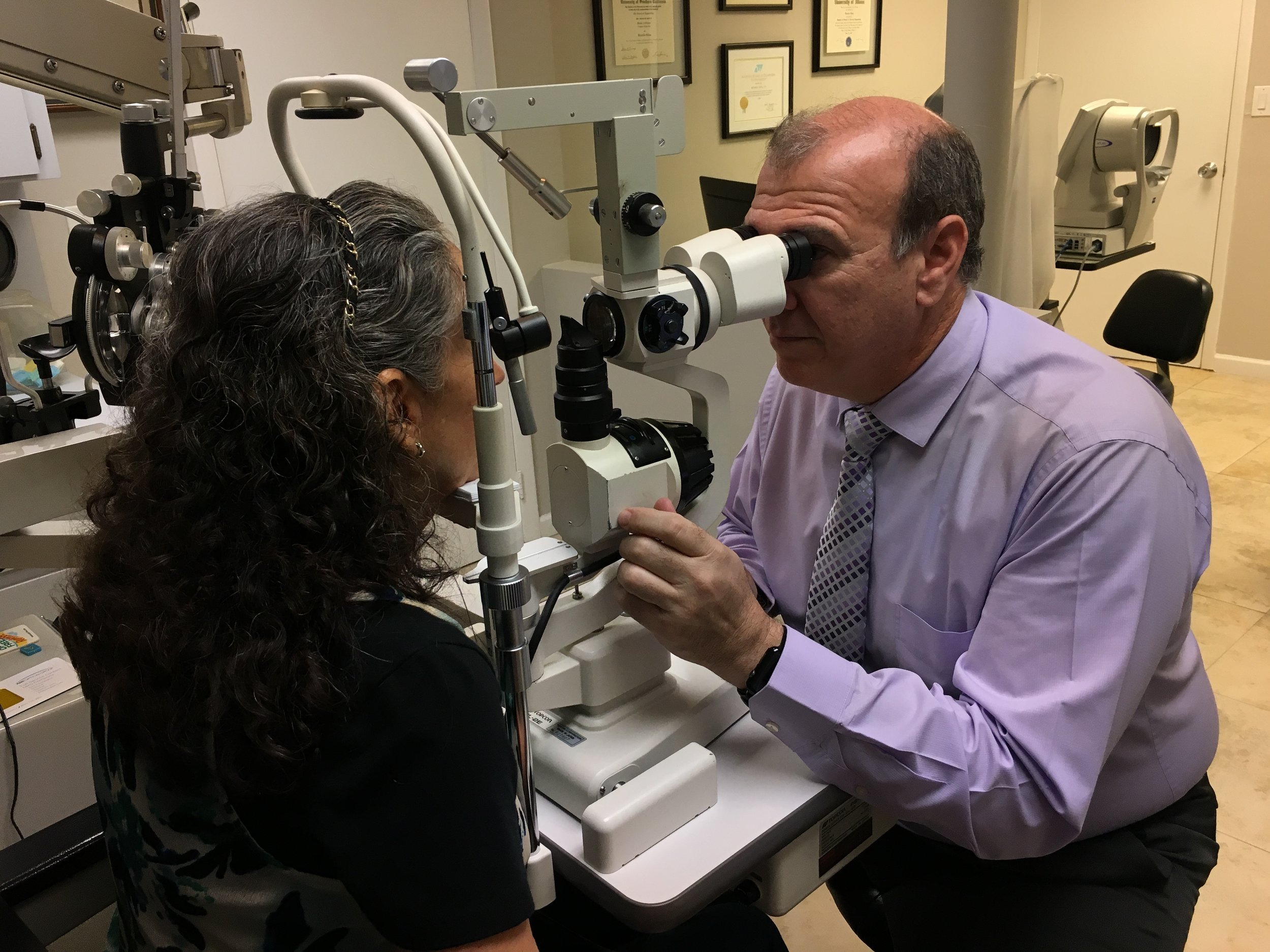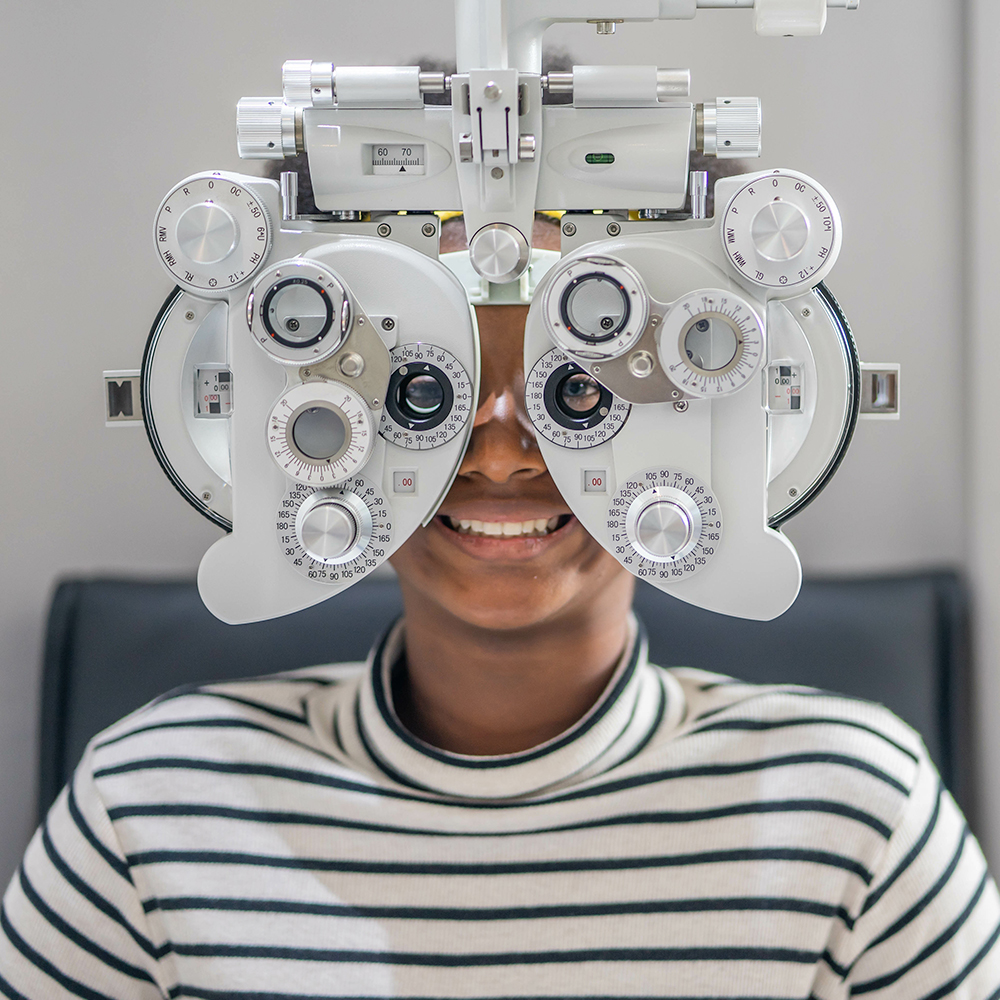Discover Advanced Solutions at Opticore Optometry for Eye Health
Discover Advanced Solutions at Opticore Optometry for Eye Health
Blog Article
Checking Out the current Technological Advancements in Optometry and What They Mean for Eye Doctors
From the precision of Optical Coherence Tomography to the nuanced understandings used by AI-driven analysis tools, these technologies are setting brand-new standards in person assessment and treatment. As these improvements permeate the practice, optometrists are encountered with the difficulty of welcoming these devices to boost person results.
Innovations in Diagnostic Equipment
Advancing the field of optometry, advancements in diagnostic devices have actually revolutionized the method eye treatment specialists assess and identify visual problems and ocular conditions. The previous decade has experienced substantial technological advancements, making it possible for even more comprehensive and exact assessments. Optical Comprehensibility Tomography (OCT), as an example, supplies high-resolution cross-sectional photos of the retina, enabling the very early detection of illness such as glaucoma and age-related macular deterioration. This non-invasive imaging method has actually ended up being vital in modern optometric technique.
Another secret development is the intro of advanced corneal topography systems, which map the surface area curvature of the cornea with accuracy. These tools are especially advantageous for fitting contact lenses and detecting corneal disorders. Electronic retinal imaging has actually changed typical ophthalmoscopy, offering in-depth, scenic views of the retina that promote extensive visual evaluations.
The advancement of wavefront aberrometry has actually additionally been important, making it possible for the analysis of refractive errors with unrivaled precision (Opticore Optometry). This innovation helps in personalizing rehabilitative lenses and enhancing medical outcomes for refractive surgical procedures. Jointly, these diagnostic advancements encourage eye doctors to provide exceptional person care, guaranteeing early treatment and customized treatment strategies, inevitably enhancing visual health end results
AI in Patient Administration
Structure on the foundation of sophisticated diagnostic tools, the unification of artificial knowledge (AI) in patient management represents a transformative leap for optometry. AI systems are progressively utilized to improve efficiency, accuracy, and customization in individual treatment.
Furthermore, AI-driven systems facilitate streamlined patient interactions and management processes. Automated organizing, virtual assessments, and customized follow-up strategies not just boost individual complete satisfaction however likewise optimize time management for specialists. These systems can triage patients based on the necessity of their conditions, ensuring that those in essential need get punctual interest.
In addition, AI improves decision-making by giving optometrists with evidence-based suggestions and therapy paths. By integrating data from digital wellness records, AI tools supply understandings that notify clinical choices, lowering the threat of errors and enhancing person end results. As AI proceeds to progress, its function in client administration will likely broaden, reshaping the landscape of optometric treatment.
Developments in Retinal Imaging
In the realm of optometry, retinal imaging has observed exceptional technological improvements that are boosting diagnostic capabilities and person care. Advancements such as Optical Comprehensibility Tomography (OCT) and fundus digital photography have actually reinvented just how eye doctors examine the retina and visualize. OCT, particularly, offers high-resolution, cross-sectional pictures of the retina, enabling the comprehensive assessment of its layers. This capacity is important for early detection and monitoring of conditions like glaucoma, diabetic retinopathy, and age-related macular deterioration.
Boosted imaging methods like OCT angiography are additional refining analysis accuracy. This non-invasive technique maps blood flow in the retina, supplying critical insights right into vascular health without the need for dye shots. Additionally, flexible optics site here innovation is being incorporated right into retinal imaging systems to remedy ocular aberrations, providing unmatched image quality. Such developments promote the identification of minute retinal adjustments that can indicate illness development.
Furthermore, improvements in fabricated knowledge are enhancing retinal imaging by enabling automated analysis of big datasets. These systems aid optometrists in determining patterns indicative of pathology, thus improving analysis accuracy and effectiveness. Collectively, these innovations are transforming retinal imaging into a keystone of modern-day eye treatment, improving results and increasing restorative opportunities.
Teleoptometry's Growing Duty
Teleoptometry is increasingly ending up being a vital element of eye care, driven by advancements in electronic communication and analysis tools. This is especially beneficial in country and underserved areas where access to specialized eye treatment is usually limited.
The assimilation of fabricated knowledge (AI) additional enhances teleoptometry, making it possible for the analysis of visual information and aiding in the detection of ocular problems such as glaucoma and diabetic person retinopathy. AI-powered formulas can swiftly interpret complex imaging information, giving optometrists with important insights that strengthen scientific decision-making.
Furthermore, teleoptometry supports connection of care through seamless assimilation with electronic health records (EHRs), permitting eye doctors to maintain detailed individual backgrounds. This makes certain that individuals get consistent and personalized care even when seeking advice from with different professionals.
Despite these advantages, challenges continue to be, consisting of guaranteeing data security and taking care of individual assumptions. Nonetheless, teleoptometry stands for a considerable stride in the direction of more obtainable, effective, and patient-centered eye treatment. As modern technology evolves, its function is poised to broaden further.

Future Fads in Eye Treatment
A myriad of cutting-edge patterns is readied to improve the future of eye care, driven by technical innovations and the developing demands of patients. One significant trend is the assimilation of synthetic knowledge (AI) in diagnostics, which guarantees to enhance the precision and efficiency of eye exams. AI formulas can evaluate vast amounts of information from retinal images, possibly identifying problems like diabetic person retinopathy and glaucoma earlier than typical techniques.
Additionally, individualized medicine is gaining grip in More Info optometry, with hereditary testing informing personalized treatment strategies. This method aims to enhance client outcomes by customizing interventions to individual hereditary profiles. Wearable modern technology, such as wise contact lenses, is likewise on the horizon, offering real-time surveillance of intraocular stress or sugar levels, therefore providing continual understandings right into systemic and eye health.
The adoption of enhanced reality (AR) and online reality (VIRTUAL REALITY) in training and client education and learning is an additional arising fad. These innovations supply immersive experiences that can improve understanding and abilities both for eye doctors and patients. As these trends advance, eye doctors have to stay abreast of technical improvements to provide sophisticated care, making sure better individual outcomes and contentment in the dynamic landscape of eye care.
Final Thought

Collectively, these analysis improvements equip optometrists to supply premium individual treatment, making sure early treatment and customized therapy methods, ultimately boosting visual wellness end results.

As these technologies continue to advance, optometrists need to adjust and incorporate them into technique, ultimately enhancing operations effectiveness and boosting the requirement of eye care supplied to individuals.
Report this page